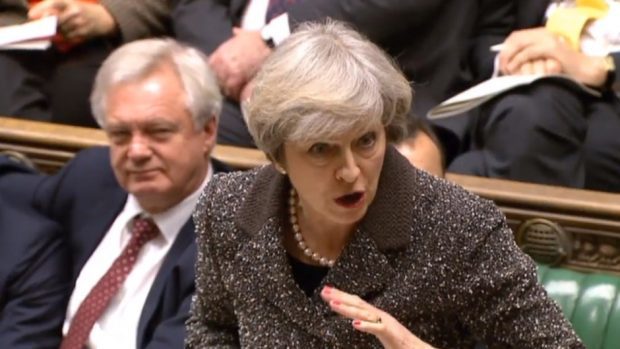Theresa May has announced the UK Government will publish a formal document setting out its plans for leaving the EU.
She said she recognised the “appetite” for a white paper at Prime Minister’s Questions.
The move, immediately branded a U-turn, had been called for across the political spectrum and was widely welcomed.
But the Tory leader also prompted concerns by refusing to confirm when the information would be published.
And she made clear she sees the publication of her government’s plan as “separate” to the process of triggering Brexit.
That set hares running amid fears the white paper might not be released before MPs vote on invoking Article 50 to clear the way for EU withdrawal talks.
Legislation is due to be published today after the Supreme Court ruled the government must obtain the approval of parliament.
Mrs May surprised MPs when she unveiled the change of heart at the start of the weekly duel in the Commons.
The announcement came after a series of pro-Remain Conservatives – including former cabinet ministers Nicky Morgan,
Dominic Grieve and Ken Clarke – and opposition MPs called for a white paper earlier this week.
Mrs May said: “The House has overwhelmingly voted that Article 50 should be triggered before the end of March 2017.
“Following the Supreme Court judgment, a bill will be provided for this House and there will be the proper debates in this chamber and in another place on that bill.
“There is then the separate question of actually publishing the plan that I have set out, a bold vision for Britain for the future.”
Labour Leader Jeremy Corbyn, who seemed wrong-footed by Mrs May’s opening gambit, asked for details about when the document would emerge, but she did not provide a date.
Her official spokeswoman later added it would be published “in due course”, but made no commitment MPs would see it before the Article 50 vote to activate the two-year negotiation process.
Meanwhile, Mrs May indicated that a No vote by MPs at the end of Brexit negotiations would mean Britain leaving the EU without a deal.
In an apparent reference to World Trade Organisation terms, which would include tariffs on many exports, she said: “We would have to fall back on other arrangements.”
Asked whether there might be an option for MPs to vote to remain in the EU rather than accept a bad deal, the PM’s spokeswoman said: “We are not going to give them an alternative which would be against the will of the British people.”
